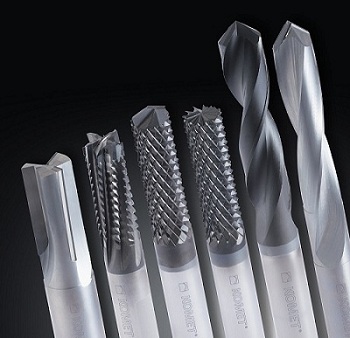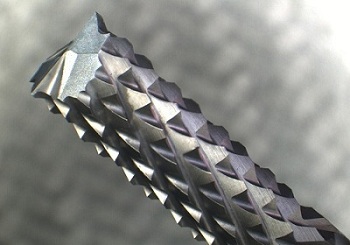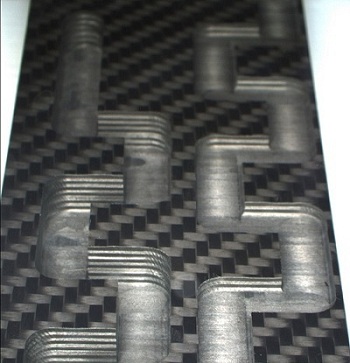The KOMET GROUP, one of the leading single-source providers of precision tools, has confronted the special challenges of lightweight construction and developed a completely new class of diamond tools which, thanks to their innovative geometry and intelligent cutting material, are particularly well suited to machining fibre-composite materials.
 In times of increasing awareness in relation to issues of energy, energy economy and energy efficiency, the lightweight construction sector, and composite materials in particular, are growing in importance. Outstanding material properties such as the extremely high strength and complex structure of these materials, however, place new demands on precision tools: Because of the high degree of abrasiveness, conventional tools used in drilling and milling operations achieve a tool life of only a few metres.
In times of increasing awareness in relation to issues of energy, energy economy and energy efficiency, the lightweight construction sector, and composite materials in particular, are growing in importance. Outstanding material properties such as the extremely high strength and complex structure of these materials, however, place new demands on precision tools: Because of the high degree of abrasiveness, conventional tools used in drilling and milling operations achieve a tool life of only a few metres.
The KOMET GROUP, which manufactures precision tools, has therefore developed a special lightweight construction tool range that focuses on composite materials (the corresponding brochure for these tools is available for download on their website at www.kometgroup.com). For excellent machining results with significantly longer tool life, a completely new class of KOMET® tools has been developed which is characterised not only by innovative geometry but also by intelligent cutting materials, and which can be employed using new machining strategies with generally very high cutting parameters.
 The newly developed solutions range from single-edge to multi-tooth milling cutters, and from drills with a new first-cut geometry to indexable insert tools with a special insert arrangement. The cutting materials also set new standards: In addition to PCD solutions, solid carbide tools, in particular, which were coated with the new KOMET RHOBEST® NCD diamond layers, have established themselves for machining composite materials.
The newly developed solutions range from single-edge to multi-tooth milling cutters, and from drills with a new first-cut geometry to indexable insert tools with a special insert arrangement. The cutting materials also set new standards: In addition to PCD solutions, solid carbide tools, in particular, which were coated with the new KOMET RHOBEST® NCD diamond layers, have established themselves for machining composite materials.
 Which type of tool is more suitable, whether PCD or solid carbide NCD, depends on the particular machining task in each case. The usual practice is, in most cases, that solid-carbide NCD tools are used in the trial stage, partly for price considerations and partly because the behaviour of the material can then be more easily and conveniently tested. PCD tools, on the other hand, are preferably used in cases where stable clamping conditions are of more importance and maximum tool life is to be achieved.
Which type of tool is more suitable, whether PCD or solid carbide NCD, depends on the particular machining task in each case. The usual practice is, in most cases, that solid-carbide NCD tools are used in the trial stage, partly for price considerations and partly because the behaviour of the material can then be more easily and conveniently tested. PCD tools, on the other hand, are preferably used in cases where stable clamping conditions are of more importance and maximum tool life is to be achieved.
It is advisable in every case to establish a close collaboration with the lightweight construction specialists from the KOMET GROUP. All relevant factors can then be jointly tested in advance before work commences. These primarily include the material which is to be machined. Machining technology also plays an essential role. The choice of tools and cutting tool material depends on whether the component is to be machined on a machining centre, using a robot or with manually operated cutting machines. Finally, workpiece clamping must also be taken into consideration, and the associated risks of vibration. Other factors include cooling, cutting speed, machining task and extraction.


